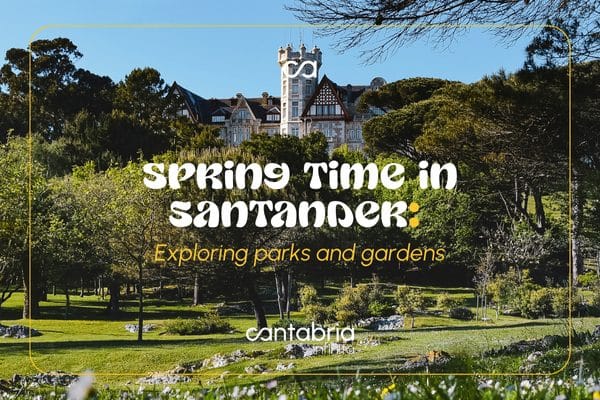First stage of the Lebaniego Way
Now already well into the Liébana Jubilee Year, we believe that it is important to travel the Lebaniego Way with all of you.
In our last post we told you about the Lebaniego Way, its history and ins and outs, have you read it? If not, you can check it out here.
The bottom line is that many of you will venture out and do the Way this year, so we thought that, in the following three blog posts, we would explain each of the three stages that make it up, to help you prepare your pilgrimage. We are convinced an experience of a lifetime such as setting out on the Way will change your life in Cantabria Infinita. Are you coming along?
Now we are now well wrapped up in celebrating 74th Liébana Jubilee Year, it is the perfect opportunity to do the Lebaniego Way, the 72 kilometres that will take us to the Monastery of Santo Toribio de Liébana. A route where nature is the real star. Surrounded by the beautiful surroundings of the region of Liébana, this route from the coast to Santo Toribio is an ideal plan to do alone, with friends, with the family or whomever with and however you prefer. The best thing about the Way is that everyone can participate in this pilgrimage to the Lignum Crucis, the largest piece of the True Cross in existence.
The first stage of the Lebaniego Way is 28 and a half kilometres long, with an altitude difference of 577 metres. The route starts at the Church of Our Lady of the Angels in San Vicente de la Barquera and ends in Cades. It is not an overly difficult stage in which nature and heritage will surprise you at every step.

We leave San Vicente de la Barquera from the Church of Our Lady of the Angels (the so-called Kilometre 0 of the Lebaniego Way ). This church is Gothic in style and was built at the same time as the rampart and the castle of one of the most touristic towns of Cantabria Infinita. Appreciating the panoramic view at this point of the town which is spectacular, especially on clear days, where we can gaze upon the majestic Picos de Europa.
Next to the church are the remains of the Hospital de la Concepción, an ancient shelter for pilgrims of the St. James Way. Near the church and before setting out on the Way one can visit the town hall, the 13th century Castillo del Rey (King’s Castle), the 15th century Convent of San Luis where Charles V stayed in 1517 to be crowned king; the La Maza Bridge and the Sanctuary of La Barquera, both also from the 15th century.
From San Vicente de la Barquera, continuing our Way heading towards Serdio, approximately 8 km away. Leaving behind a blue and green landscape and the latter becomes more intense on its way through La Acebosa, Hortigal and Estrada  with its 14th century, Gothic style, medieval tower, part of a defensive structure which is well worth a visit and perfect for a quick stop on our route.
with its 14th century, Gothic style, medieval tower, part of a defensive structure which is well worth a visit and perfect for a quick stop on our route.
From this point the Lebaniego Way continuing along a beautiful mountain trail which leads to Muñorrodero, and where the road forks parting company with the pilgrims heading to Santiago de Compostela and those heading to Santo Toribio de Liébana, following the yellow and red arrows respectively.
Right in Muñorrodero begins the 8-kilometre long Nansa River Path, which runs through a riparian forest of varied trees along the river and fabled wooden footbridges and has three fishermen’s shelters with fireplaces. The trail ends in Camijanes, where one can rest and refuel and drink from the fountain that crosses the river.
At this point there is the option to continue along the official path that goes up the road to the village of Cabanzón, or take the detour which goes back along the banks of the Nansa river. This second section of the river path (the shallow waters detour) is only accessible in Summer, when the river flow is low. It is an exceptionally beautiful path, in which sure enough mud can be a problem. If you take the official path it is a bit longer, but it has beautiful views. When as arrive at Cabanzón, you will see its medieval tower, a feudal vestige which was part of a defensive system of the sphere of influence of San Vicente de la Barquera. The original tower is from the 8th century but only the walls of the 15th century remain.
Crossing Cabanzón, there is the option to go up to Otero or continue along the road and reach the town of Cades, where we will finish our first stage.
At the end of the road the Ferrería de Cades (Cades Foundry) is a must-see visit, which is part of an ensemble of singular complexity. The water was captured at a height of 1,000 metres to transport it through a canal and like that move the two flour mills, in addition to the foundry. It is possible to take a guided tour, but it is essential to book in advance.
In the town of Cades, in the neighbourhood of Puente El Arrudo, there is the Albergue El Cárabo Hostel, which must be booked in advance if wishing to stay overnight there.
Are you game to set out on the Way, this Liébana Jubilee Year? We look forward to your comments and your visit to Cantabria Infinita.
All the information about the Liébana Jubilee Year and the Lebaniego Way can be found at www.caminolebaniego.com and at www.turismodecantabria.com
Come and experience the Liébana Jubilee Year in Cantabria and tell us about your experience in our social networks on Facebook and Twitter. Come to and enjoy Cantabria, + x discover






